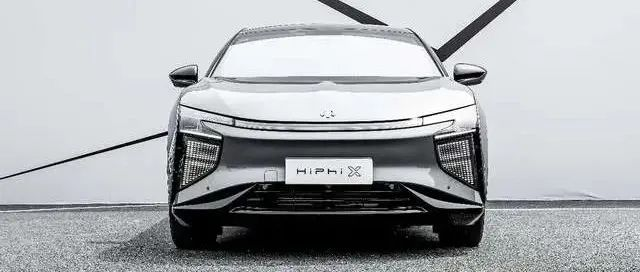In the field of electric vehicles, there are many opportunities.
In the traditional fuel car field, it is the era centered around engines and gearboxes. It is too difficult for Chinese companies to break through in branding, powertrain technology, and iterative systems to create high-end brands. However, in the field of new energy, Tesla has successfully taken the first step, and Chinese new car companies, especially from NIO, have started to build high-end brands. Luxury pure electric car models have achieved phased success in both the domestic and international markets. From the price range of over 500,000 yuan, since the end of last year, two domestic car options, GAC Trumpchi and Hongqi, have appeared on the monthly list, which was previously dominated by foreign brands. In particular, GAC Trumpchi not only sells at this price, but also successfully sells nearly 1,000 units per month.
According to the data from the insurance company, GAC Trumpchi’s HiPhi X had 919 insured deliveries in December last year, ranking first in the sub-segment of luxury electric vehicles priced over 500,000 yuan. I want to take some time to sort out the technical information of this HiPhi X, and of course, if there is further dismantling information in the future, it will be updated for everyone.
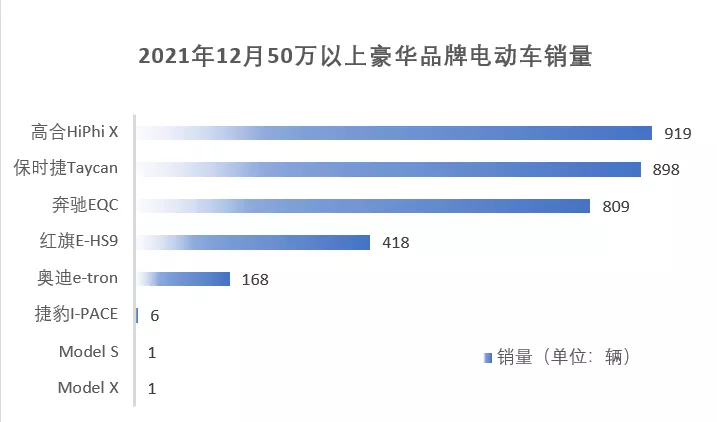
Level of Intelligence
The first thing most people know about GAC HiPhi X is its nickname “Nine-Door Admiral”: the entire electric eagle gullwing doors, followed by projection headlights (customizable digital lighting system), the entire large screen (customizable 5D immersive cockpit), and a series of high configurations, including power battery configurations. From the perspective of intelligence, the high-level HiPhi X proposed by GAC is under the H-SOA architecture, which currently revolves around software/hardware separation and is developed around a domain controller.
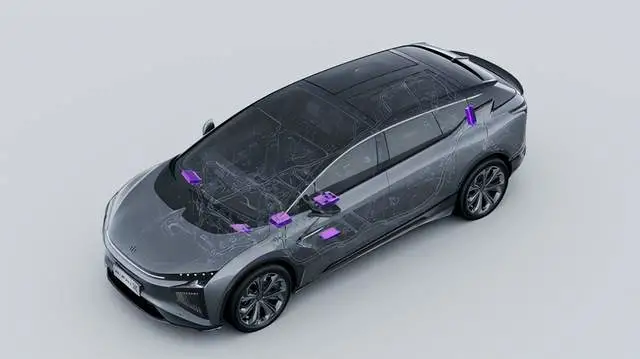
The development based on the domain controller can support the abstraction of the underlying hardware sensors and the underlying execution unit functions, which means that many hardware functions are separated from the hardware and extracted to the middleware of the computing platform, realizing software/hardware separation. Therefore, this also gives software engineers sufficient support, allowing software engineers to connect all hardware systems through middleware systems and create new usage scenarios through cross-domain service calls.
From a specific application point of view, it is similar to the OS of a smartphone, which can develop many application software (APP software). According to the official data, this GAC HiPhi X, due to the increase in configuration, has more than 500 vehicle-mounted sensors (including internal system perception) and more than 300 actuators.## HiPhi X Smart Cabin System
Gaohe promotes intelligent use scenarios, so we have developed various functions on the smart cockpit system, which is somewhat similar to the smart home systems we use at home, and imported this system into the driving scenario. Here are some interesting features such as nap break and magic barbecue, which are programmed in advance. Through the system calling the seat, massage, steering wheel, central control screen, PML programmable intelligent headlights, ISD intelligent interactive headlights, car interior ambient lights, fragrance, sound system, and other hardware, the vehicle can be started with one click and multiple functions can be integrated into one scene. This is difficult to achieve in traditional cars, and the development time is very long. Also, it is impossible to constantly upgrade new scenarios and iterate continuously through over-the-air updates. It can be said that the electronic-electrical architecture is the soul of a smart car.
Currently, there is no EE architecture diagram for this HiPhi model in various occasions. But from the current perspective, it may have already entered the stage of focusing on the domain controller and moving in the direction of the central computer in the next step. I think it is earlier than the prediction made by Yole, and the iteration of Chinese new car brands in the field of EE architecture is faster than that of traditional global car companies.
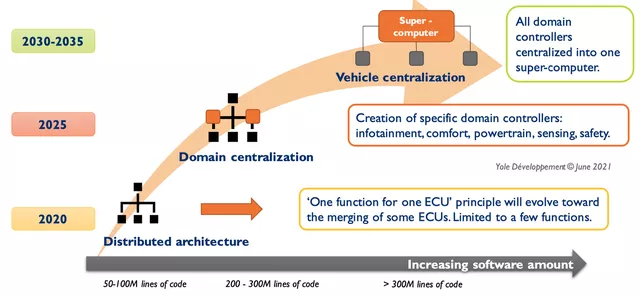
Many configurations have been derived from this smart architecture, and one of the more valuable ones is the headlight system.
Car lights have always been a key area of competition among various car companies. The distinctive feature of the HiPhi car is the PML programmable intelligent headlights and the ISD intelligent interactive lighting system, which make the whole car full of technology. At the same time, the car’s taillights integrate the outdoor LED screen into the LED tail light group, and the ISD intelligent interactive display system is integrated on the screen.
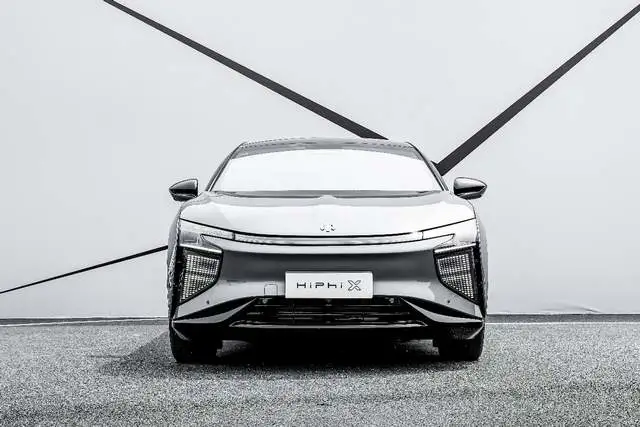
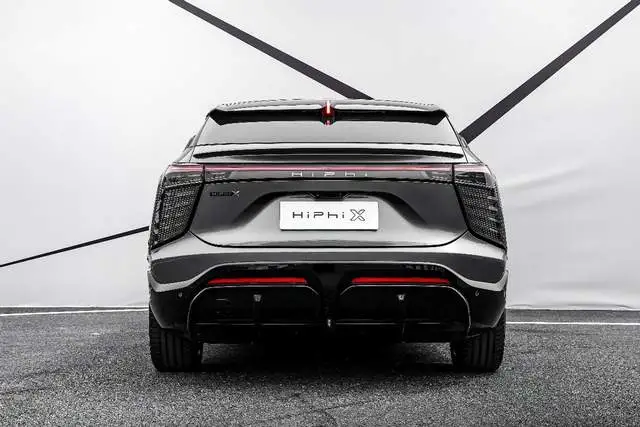
In addition to its high-definition and ultra-brightness, the PML programmable intelligent headlight (which has been seen in concept cars such as DMD and DLP) can also project customized text, images, and videos, and can project navigation.
Gaohe has also brought new features to this lighting system. At the media communication meeting, Dr. Chen Jun, the joint CTO, demonstrated several impressive applications.Firstly, the intelligent headlights of the car can avoid direct light exposure to pedestrians’ eyes through the precise arrangement of the lamp group. In addition to the basic function of the intelligent lighting system, when the owner gives way to pedestrians while driving, the headlights can even project a zebra crossing to remind pedestrians to go first and let them know the owner is waiting. Another driver-friendly feature is that in narrow roads where it is difficult to judge whether the car can pass with the naked eye, the light can project a “light carpet” (essentially a virtual lane) to assist the driver to pass safely and confidently. Moreover, the car is equipped with an infrared camera that detects pedestrians who may have been overlooked and projects warning signs to remind the driver.
Although these functions may not be particularly difficult to implement from the perspective of projection technology, their application in cars can make people feel the humanistic care and warmth of technology. Although traditional luxury brands such as Mercedes-Benz S and Audi e-tron GT also have this type of projection headlight, they do not have interesting functions like HiPhi X that are developed around user scenarios on actual production cars, let alone the ability to update patterns and customize text (which can be modified in real-time by the car). This also reflects the new ideas and innovation capabilities of domestic new forces in car manufacturing.
In terms of safety level, the car doors on this HiPhi X model have many features to consider.
The most noteworthy are the six doors with different opening and closing methods: scissor doors and gullwing doors. The doors can be opened at different angles not only for the sake of being cool, but also for safety – in case the vehicle is trapped in almost any position, different doors can be opened to allow for safe escape.
All doors are electronically controlled, and it is natural to worry about situations where the doors cannot be opened in the event of a special collision. According to the information available, this car has considered many aspects:
-
Redundant power distribution design: This car is equipped with two sets of batteries and power distribution systems, which each supply power to the doors and critical controllers. When the airbag is deployed, the door locks will automatically open to ensure the user can escape.
-
Passive cable design: in the event that even the redundant power distribution is ineffective (such as in a multi-collision scenario where the car is sandwiched in the middle and both front and rear power sources are damaged), the car body engineer has reserved mechanical emergency cables on all four doors, and the cable-pulling function has the highest priority in terms of logic, so when pulled, the door will open.
Car Body Structure
When the door frame is deformed by impact, will the passive cable be ineffective? From a structural point of view, the shape of each load-bearing part of the car body is optimized to disperse the load and ensure that the door and the body become a tight whole at the connection between the expanding wing door and the body, allowing the entire cabin to efficiently bear the impact force.
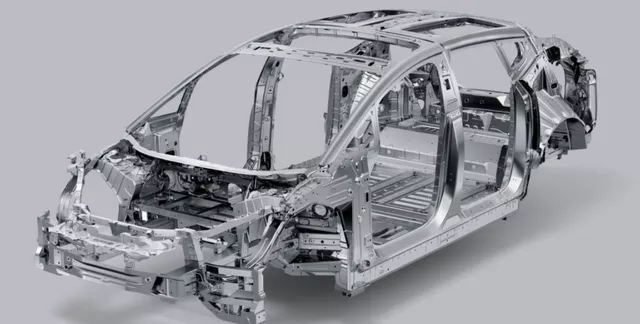
As an electric vehicle, the safety of the battery system is currently the most concerned topic for users.
Gaohe adopted the standard 590 module to build the design of the entire vehicle, and also used a standard battery core design. Ceramic heat insulation pads are used between the battery cores and the module body to effectively inhibit heat transfer between the modules. Then the battery management system is used to conduct thermal runaway warning. By real-time interconnection between the battery management system (BMS) and the cloud server, a full range of visual status is provided. Interestingly, for this car, Gaohe can optimize the charging time through cloud big data and battery data from the owner’s end. The system will optimize the charging curve, charging model, and charging time through data calculation and analysis based on different time, location, environment, and other factors.
From the structure of the car, the added bottom shield plate is made of 0.8 mm steel plate which can pass the bottom ball impact test. The front sub-frame is added with a crossbeam protection to resist the impact or collision of lower obstacles on the battery pack and bottom during driving.
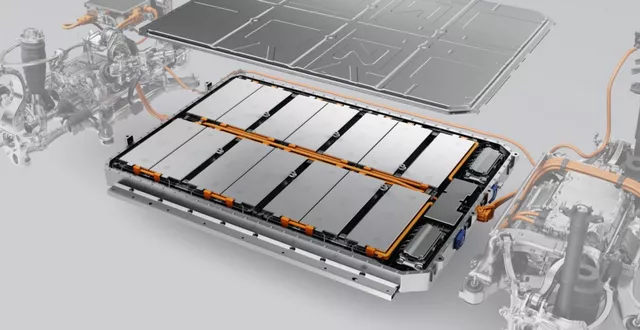
Conclusion
Due to sufficient budget and cost support, Gaohe HiPhi X uses high-quality materials and integrates many intelligent innovative applications, making the car new and rich in features. After seeing the release exchange meeting, one can really feel Gaohe’s concept: “software-defined cars, scenario-defined designs, co-creation-defined values”——all functions are based on actual user needs and developed based on a future-oriented intelligent architecture, and the effect is indeed very distinctive, truly laying the cornerstone for the development of the next generation of intelligent cars.
As someone in the automotive industry, I also have some feelings about Mr. Ding’s speech at the exchange meeting. Mr. Ding said (in essence), creating this company is also for the young generation of automotive engineers. They do not need to go through the development stages they have experienced in the past, but can stand on their shoulders to challenge the world’s advanced level and create new heights in China’s enterprises, winning international respect for China’s automobiles. Yao and I have many former colleagues in this company, and we are really happy for them.
This article is a translation by ChatGPT of a Chinese report from 42HOW. If you have any questions about it, please email bd@42how.com.
